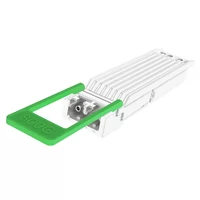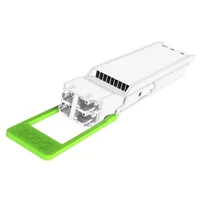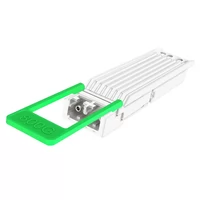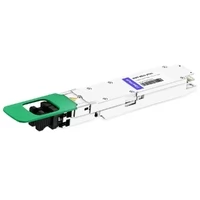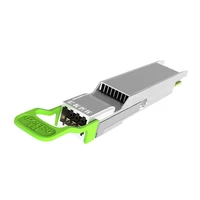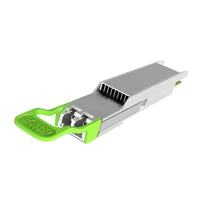Nvidia detailed how its chips are accelerating innovation in the high-performance computing (HPC) industry, especially for AI-driven systems that will drive scientific advancement through supercomputing.
The chipmaker also announced plans to accelerate its quantum computing efforts at national quantum computing centers globally, including installing its open-source CUDA-Q platform at sites around the world.
High-performance computing is at the core of advanced scientific research, helping us unlock profound insights about the world at massive scales, particularly for atmospheric and ocean models that require AI simulations. Extreme computing power is also needed in fields like materials and life sciences, such as biopharmaceuticals and drug discovery, as the computational demands of complex equations and modeling quickly outpace traditional systems.
Nvidia’s CUDA-Q platform is a key component of its quantum computing efforts, tightly integrating quantum processing units (QPUs) with supercomputers for more efficient quantum computing. This hybrid quantum-classical approach to accelerated supercomputing not only addresses quantum bit noise issues but also enables the development of more efficient algorithms, which is crucial for driving practical quantum computing applications.
Table of Contents
ToggleNVIDIA Accelerates Global Quantum Computing
At the International Supercomputing Conference (ISC High Performance) in Hamburg, Germany in 2024, Nvidia announced that nine new supercomputers globally are using its Grace Hopper Superchips, collectively providing 200 exaflops (200 quintillion calculations per second) of computing power. Nvidia claims this is twice as energy-efficient as x86 systems plus GPUs.
Dion Harris, Nvidia’s head of accelerated data center go-to-market, stated in a media briefing that the Grace Hopper super chip accounts for 80% of Hopper chip sales. He explained, “What’s exciting about this is that it leverages the novel features of this tightly coupled CPU and GPU architecture to deliver outstanding performance for high-performance computing (HPC) and artificial intelligence (AI).”
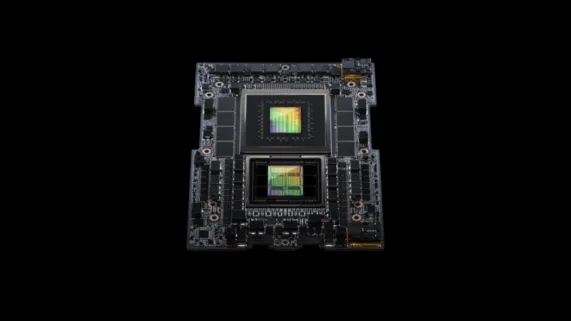
The first European Grace Hopper supercomputer to go online is Alps, located at the Swiss National Supercomputing Centre and built by Hewlett Packard Enterprise (HPE). It features 10,000 Grace Hopper superchips, providing 20 exaflops of AI computing power. The role of the Alps supercomputer is to advance weather and climate modeling as well as materials science.
The deployment of these supercomputers represents a major advancement in high-performance computing and AI, expected to have profound impacts across multiple fields of scientific research. Through these advanced computing platforms, researchers will be able to process complex computational tasks more quickly, driving scientific discoveries and technological innovations. Simultaneously, the energy efficiency of these high-performance computing platforms reflects Nvidia’s efforts and achievements in designing energy-efficient supercomputing solutions.
Supercomputing sites in Germany, Japan, and Poland will use the platform to power quantum processing units (QPUs) within their Nvidia-accelerated high-performance computing systems.
QPUs are the “brains” of quantum computers, performing computations by leveraging the behavior of particles such as electrons or photons, in a manner different from traditional processors, potentially enabling certain types of computations to be performed more quickly. Unlike regular bits of information that can only be 1 or 0, quantum bits (qubits) can exist in an uncertain state, simultaneously being 1 and 0. As a result, quantum processors can perform computations faster than traditional processors. However, this also means that algorithms designed for quantum processors must be able to handle these uncertain “potential” states, while also dealing with noise and potential errors.
The Jülich Supercomputing Centre (JSC) at Forschungszentrum Jülich (FZJ) in Germany is installing QPUs manufactured by IQM Quantum Computers as a complement to its Jupiter supercomputer, powered by Nvidia GH200 Grace Hopper superchips. Jupiter is Europe’s first exascale supercomputer and will be equipped with 24,000 Nvidia GH200 superchips.
Japan’s National Institute of Advanced Industrial Science and Technology (AIST) is adding QPUs from QuEra to its ABCI-Q supercomputer, expected to be deployed early next year and also featuring 2,000 Nvidia H100 GPUs designed for future integration with quantum hardware.
The Poznan Supercomputing and Networking Center (PSNC) in Poland has also installed two photonic QPUs manufactured by UK-based PsiQuantumComputing, which are connected to a new supercomputer partition driven by Nvidia H100s.
Tim Costa, head of Nvidia’s Quantum and High-Performance Computing (HPC) division, stated that practical quantum computing will be achieved through the tight integration of quantum computing with GPU supercomputing. Nvidia’s quantum computing platform provides pioneers like Japan’s AIST, Germany’s JSC, and Poland’s PSNC with the tools to push the boundaries of scientific discovery and advance the frontiers of quantum-integrated supercomputing.
Quantum Computing Applications
AIST researchers will use the QPUs integrated with ABCI-Q to study quantum applications in artificial intelligence, energy, and biology, utilizing laser-controlled rubidium atoms as qubits for computation. These atoms are the same as those used in precision atomic clocks, with each atom being identical, providing a promising approach for achieving large-scale, high-fidelity quantum processors.
Masahiro Horibe, Deputy Director of G-QuAT/AIST in Japan, stated that Japanese researchers will use the ABCI-Q quantum-classical accelerated supercomputer to make progress in practical quantum computing applications, with Nvidia helping these pioneers push the boundaries of quantum computing research.
The QPUs at PSNC will enable researchers to explore biology, chemistry, and machine learning using two PT-1 quantum photonic systems. These systems use single photons or light pulses at telecommunication frequencies as qubits, allowing for distributed, scalable, and modular quantum architectures using standard off-the-shelf telecommunication components.
Krzysztof Kurowski, CTO and Deputy Director of PSNC, said, “The collaboration with ORCA and Nvidia enables us to create a unique environment and build a new quantum-classical hybrid system at PSNC. The open, easy-to-integrate and program multiple QPUs and GPUs, and effective management of user-centric services, are crucial for developers and users. This close collaboration paves the way for the next generation of quantum-accelerated supercomputers for many innovative application domains, not tomorrow but today.”
The QPUs integrated with the Jupiter supercomputer will enable JSC researchers to develop quantum applications for chemical simulations and optimization problems, as well as demonstrate how quantum computers can accelerate classical supercomputers. They are built from superconducting qubits or electron spin resonance circuits that can be engineered to behave as artificial atoms at low temperatures.
Kristel Michielsen, head of the Quantum Information Processing group at JSC, stated, “Hybrid quantum-classical accelerated supercomputing is bringing quantum computing closer. Through ongoing collaboration with Nvidia, JSC researchers will advance quantum computing as well as chemistry and materials science.”
CUDA-Q is an open-source, QPU-agnostic quantum-classical accelerated supercomputing platform used by most companies deploying QPUs and providing top-notch performance.

NVIDIA’s Super Chip Tackles Climate Change
Nvidia has stated that systems based on its Grace Hopper superchips, being deployed across nine supercomputing centers, will hasten the pace of scientific research and discovery. These new Grace Hopper-based supercomputers include:
- EXA1-HE: Located in France, provided by the French Alternative Energies and Atomic Energy Commission (CEA) and Eviden (a subsidiary of Atos Group). The EXA1-HE supercomputer is based on Eviden’s BullSequana XH3000 technology, featuring a new patented warm-water cooling system, and is equipped with 477 compute nodes powered by Grace Hopper.
- Helios: Situated at the Academic Computer Center Cyfronet in Poland.
- Alps: At the Swiss National Supercomputing Centre, provided by Hewlett Packard Enterprise (HPE).
- Jupiter: Located at the Jülich Supercomputing Centre in Germany.
- DeltaAI: At the National Center for Supercomputing Applications at the University of Illinois Urbana-Champaign.
- Miyabi: At the Joint Center for Advanced High-Performance Computing in Japan, established jointly by the Computational Science Center at the University of Tsukuba and the Information Technology Center at the University of Tokyo.
Furthermore, Nvidia announced that the University of Bristol’s Isambard-AI and Isambard 3 in the UK, as well as systems at Los Alamos National Laboratory and the Texas Advanced Computing Center in the US, have become the latest to adopt Nvidia’s Arm-based Grace CPU superchips and Grace Hopper platform.
“AI is accelerating climate change research, speeding up drug discovery and driving breakthroughs across scores of other domains. Systems powered by Nvidia Grace Hopper are becoming an important part of high performance computing as they transform industries while increasing efficiency,” stated Ian Buck, Nvidia’s vice president of Hyperscale and High Performance Computing, in a statement.
The deployment of these supercomputers marks a significant advancement in high performance computing and artificial intelligence, expected to have profound impacts across multiple areas of scientific research, including climate change, drug discovery, data analytics, and materials science. With these advanced computing platforms, researchers will be able to process complex computational tasks more rapidly, signifying a substantial enhancement in our ability to tackle some of the world’s most intricate problems, driving scientific discoveries and technological innovations.
Sovereign Artificial Intelligence
The concept of Sovereign AI underscores the significance of a nation’s ownership and control over data, infrastructure, and workforce to foster innovation while safeguarding strategic and cultural interests. As the global recognition of Sovereign AI’s importance deepens, countries are accelerating the development of more efficient, AI-powered supercomputers.
Nvidia has introduced the GH200 superchip, combining its Arm-based Grace CPU and Hopper GPU architectures using Nvidia’s NVLink-C2C interconnect technology, becoming the powerful engine behind global scientific supercomputing centers. Many centers aim to transition from system installation to actual scientific research within months rather than years.
The first phase of Isambard-AI includes an HPE Cray EX2500 supercomputer equipped with 168 Nvidia GH200 superchips, making it one of the most efficient supercomputers ever. When the remaining 5,280 Nvidia Grace Hopper superchips arrive at the University of Bristol’s National Composite Centre this summer, its performance is expected to increase by approximately 32 times.
“Isambard-AI will position the UK as a global leader in AI and help drive open science innovation at home and abroad. Working with Nvidia, we completed the project’s first phase in record time, and when finished this summer, it will see a massive performance leap to advance areas like data analytics, drug discovery, and climate research,” stated Professor Simon McIntosh-Smith from the University of Bristol.
These developments strengthen the UK’s leadership in supercomputing and AI and highlight Sovereign AI’s importance in driving scientific discoveries and technological innovations. With such high-performance infrastructure, researchers will be able to solve complex scientific problems more rapidly and drive breakthrough research on a global scale.
Related Products:
-
 OSFP-800G-FR4 800G OSFP FR4 (200G per line) PAM4 CWDM Duplex LC 2km SMF Optical Transceiver Module
$3500.00
OSFP-800G-FR4 800G OSFP FR4 (200G per line) PAM4 CWDM Duplex LC 2km SMF Optical Transceiver Module
$3500.00
-
 OSFP-800G-2FR2L 800G OSFP 2FR2 (200G per line) PAM4 1291/1311nm 2km DOM Duplex LC SMF Optical Transceiver Module
$3000.00
OSFP-800G-2FR2L 800G OSFP 2FR2 (200G per line) PAM4 1291/1311nm 2km DOM Duplex LC SMF Optical Transceiver Module
$3000.00
-
 OSFP-800G-2FR2 800G OSFP 2FR2 (200G per line) PAM4 1291/1311nm 2km DOM Dual CS SMF Optical Transceiver Module
$3000.00
OSFP-800G-2FR2 800G OSFP 2FR2 (200G per line) PAM4 1291/1311nm 2km DOM Dual CS SMF Optical Transceiver Module
$3000.00
-
 OSFP-800G-DR4 800G OSFP DR4 (200G per line) PAM4 1311nm MPO-12 500m SMF DDM Optical Transceiver Module
$3000.00
OSFP-800G-DR4 800G OSFP DR4 (200G per line) PAM4 1311nm MPO-12 500m SMF DDM Optical Transceiver Module
$3000.00
-
 NVIDIA MMS4X00-NM-FLT Compatible 800G Twin-port OSFP 2x400G Flat Top PAM4 1310nm 500m DOM Dual MTP/MPO-12 SMF Optical Transceiver Module
$1199.00
NVIDIA MMS4X00-NM-FLT Compatible 800G Twin-port OSFP 2x400G Flat Top PAM4 1310nm 500m DOM Dual MTP/MPO-12 SMF Optical Transceiver Module
$1199.00
-
 NVIDIA MMA4Z00-NS-FLT Compatible 800Gb/s Twin-port OSFP 2x400G SR8 PAM4 850nm 100m DOM Dual MPO-12 MMF Optical Transceiver Module
$650.00
NVIDIA MMA4Z00-NS-FLT Compatible 800Gb/s Twin-port OSFP 2x400G SR8 PAM4 850nm 100m DOM Dual MPO-12 MMF Optical Transceiver Module
$650.00
-
 NVIDIA MMS4X00-NM Compatible 800Gb/s Twin-port OSFP 2x400G PAM4 1310nm 500m DOM Dual MTP/MPO-12 SMF Optical Transceiver Module
$900.00
NVIDIA MMS4X00-NM Compatible 800Gb/s Twin-port OSFP 2x400G PAM4 1310nm 500m DOM Dual MTP/MPO-12 SMF Optical Transceiver Module
$900.00
-
 NVIDIA MMA4Z00-NS Compatible 800Gb/s Twin-port OSFP 2x400G SR8 PAM4 850nm 100m DOM Dual MPO-12 MMF Optical Transceiver Module
$650.00
NVIDIA MMA4Z00-NS Compatible 800Gb/s Twin-port OSFP 2x400G SR8 PAM4 850nm 100m DOM Dual MPO-12 MMF Optical Transceiver Module
$650.00
-
 NVIDIA MMS1Z00-NS400 Compatible 400G NDR QSFP112 DR4 PAM4 1310nm 500m MPO-12 with FEC Optical Transceiver Module
$700.00
NVIDIA MMS1Z00-NS400 Compatible 400G NDR QSFP112 DR4 PAM4 1310nm 500m MPO-12 with FEC Optical Transceiver Module
$700.00
-
 NVIDIA MMS4X00-NS400 Compatible 400G OSFP DR4 Flat Top PAM4 1310nm MTP/MPO-12 500m SMF FEC Optical Transceiver Module
$700.00
NVIDIA MMS4X00-NS400 Compatible 400G OSFP DR4 Flat Top PAM4 1310nm MTP/MPO-12 500m SMF FEC Optical Transceiver Module
$700.00
-
 NVIDIA MMS4X50-NM Compatible OSFP 2x400G FR4 PAM4 1310nm 2km DOM Dual Duplex LC SMF Optical Transceiver Module
$1200.00
NVIDIA MMS4X50-NM Compatible OSFP 2x400G FR4 PAM4 1310nm 2km DOM Dual Duplex LC SMF Optical Transceiver Module
$1200.00
-
 OSFP-XD-1.6T-4FR2 1.6T OSFP-XD 4xFR2 PAM4 1291/1311nm 2km SN SMF Optical Transceiver Module
$15000.00
OSFP-XD-1.6T-4FR2 1.6T OSFP-XD 4xFR2 PAM4 1291/1311nm 2km SN SMF Optical Transceiver Module
$15000.00
-
 OSFP-XD-1.6T-2FR4 1.6T OSFP-XD 2xFR4 PAM4 2x CWDM4 2km Dual Duplex LC SMF Optical Transceiver Module
$20000.00
OSFP-XD-1.6T-2FR4 1.6T OSFP-XD 2xFR4 PAM4 2x CWDM4 2km Dual Duplex LC SMF Optical Transceiver Module
$20000.00
-
 OSFP-XD-1.6T-DR8 1.6T OSFP-XD DR8 PAM4 1311nm 2km MPO-16 SMF Optical Transceiver Module
$12000.00
OSFP-XD-1.6T-DR8 1.6T OSFP-XD DR8 PAM4 1311nm 2km MPO-16 SMF Optical Transceiver Module
$12000.00

